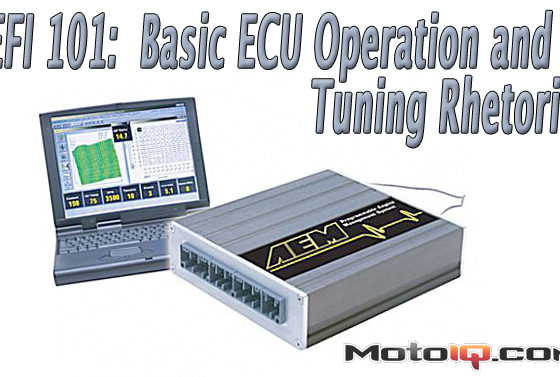,
 |
| We secured the cable with zip ties about every 10-12 inches to ensure that the cable could not flop around and chafe. |
Another disadvantage of stock lead acid batteries is that they are very heavy. The internal pates of these batteries are made of lead with is quite dense. A typical stock battery for a 4 cylinder compact weighs about 40 lbs and a battery that cranks over a large V8 easily weighs about 50+ lbs. A dry cell battery that can power your street car like an Odyssey 680 or a Braille B14115 weighs only 11-15 lbs. Using one of these batteries is an easy way to instantly shave 30-40 lbs from your car as well as improve weight distribution. Smaller batteries such as these are not advisable if you are running a lot of lights such as rally or night enduro racing or if you are into having large amounts of ICE in your car. In this case the companies that sell drycell racing batteries have units weighing about 20-25 lbs half the weight of the stock batteries with superior power capability.
 |
| We bolted the positive terminal end to the stock positive terminal and covered it with the factory cap. This way we could have a point under the hood to jump the car or attach a timing light if need be. |
For cable, we recommend a copper conductor, heavy gauge wire since starter motors have the highest amperage draw of any electrical part in a car. We prefer welding cable as it has very low resistance. We use 0 gauge for trunk mounted batteries due to its low resistance. If you have a tough to spin big high compression V-8 motor, you might opt for the thicker even lower resistance 00 gauge wire. You can look at aircraft supply or marine supply houses for terminal ends and crimpers to terminate your cables properly. The drycell battery makers also usually sell these items as accessories.
 |
| The rubber terminal end caps shown here were also purchased from a marine supply house and are a good idea to help prevent shorts. We set up the ground cable as a floating ground to the chassis to help save the weight of routing another cable through the car. The ground cable has to be very carefully mounted, the paint must be completely stripped to bare metal and its good to run a tap to clean the threads of the bolt hole used for grounding. If you use a floating ground, you must make sure that your engine is very well grounded with a heavy gage ground wire, preferably the same gage as the positive wire. This Evo has a ground kit installed so it’s not an issue. Also floating grounds tend to make more whining noise that stereos might pick up. If you are into ICE, you might opt to run the ground cable all the way to the front of the car to the engine block and the stock chassis ground. |
It is important to route the wire correctly. Remember that if the wires insulation wears or chafes though, you will have a major short circuit and the potential for a really nasty electrical fire. In most cases we prefer to route the main power wire though the interior of the car so it is less likely to be damaged. It is important to secure the wire in many places using captive zip ties and/or rubber lined adel clamps so that it cannot rub and flop around, potentially damaging the wire. You have to be careful when mounting the wire near driveshafts, exhaust systems and suspension parts that move, lest they burn, chafe or pinch the wire. You can cover the wire with plastic convoluted split loom to help protect it in areas where it might be rubbed on or exposed to the elements.
 |
| With the trunk interior back in place you can admire our clean factory like, safe installation. |
When wires have to pass through the cars body, like firewalls or trunk panels, it is a good idea to use a cable bulkhead pass through grommet like the type found in marine supply stores or aircraft parts houses. These areas are the wire is most likely to chafe and short out. At the very least, you will want to use a thick rubber grommet when wires have to go through sheetmetal to prevent chafing. We have seen several race cars burn up due to a lack of attention to detail this particular area. It is also a good idea to use a circuit breaker like the type found in car audio, marine and aircraft supply stores or heavy duty marine slow blowing fuses to reduce the damage if something does cause the wire to short. It should be mounted as close to the positive battery terminal as possible.
 |
| This race car uses an Odyssey 680 battery securely held in place by their sheetmetal mount. This is a very safe and secure mount. We have seen several batteries tear loose in racing accidents with devastating results. In a crash you don’t want to even think about being struck by a solid 10-50 lb chunk of lead and plastic. |
Relocating the battery is a good way to spend an afternoon doing a modification that gives a big gain in handling, and can be a large reduction in overall weight for very little money.
Sources
Braille Batteries
http://www.brailleauto.com
Odyssey Batteries
http://www.odysseybatteries.com
Password JDM
www.passwordjdm.com
Technosquare
The best damn shop in town
http://www.technosquareinc.com



